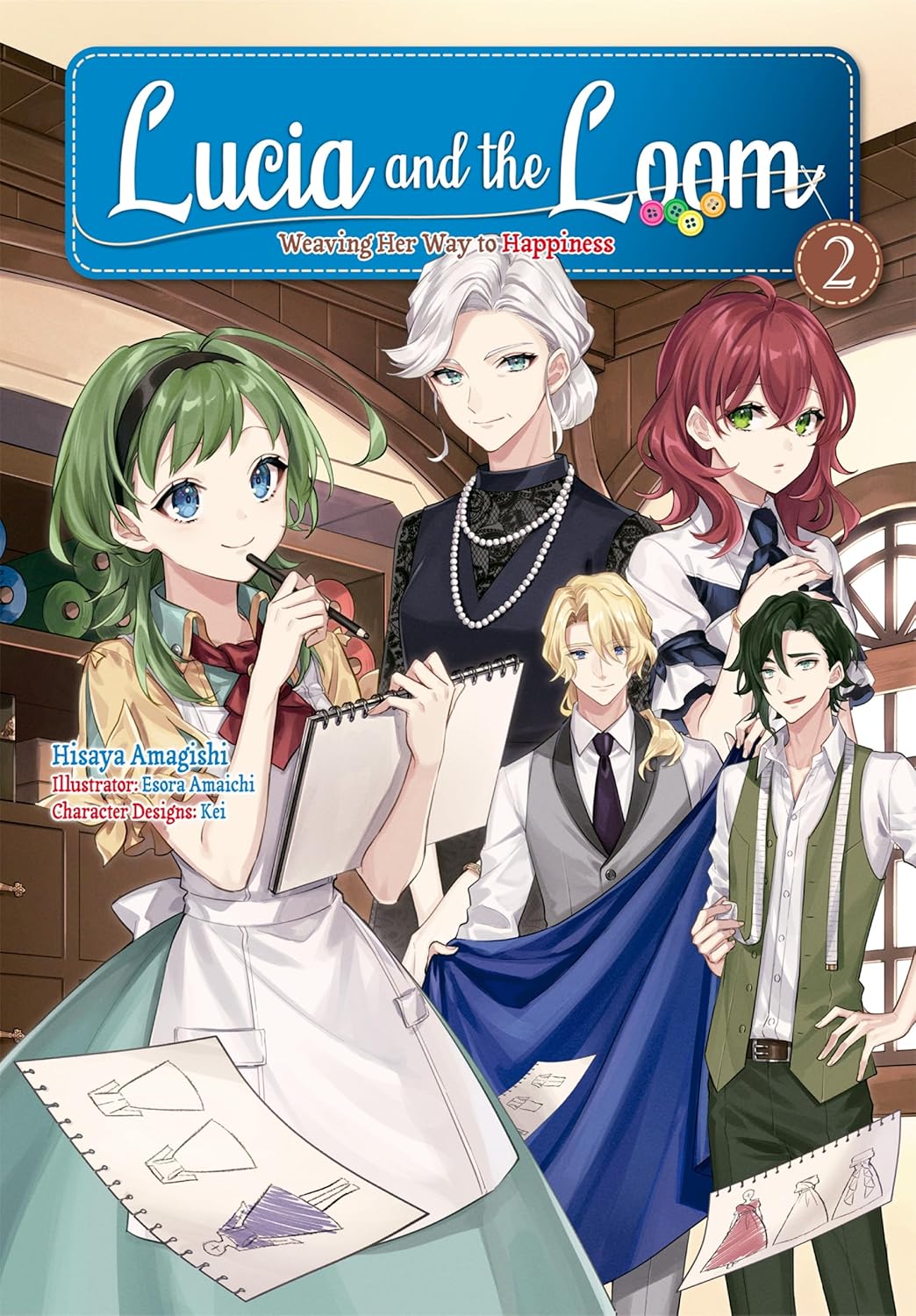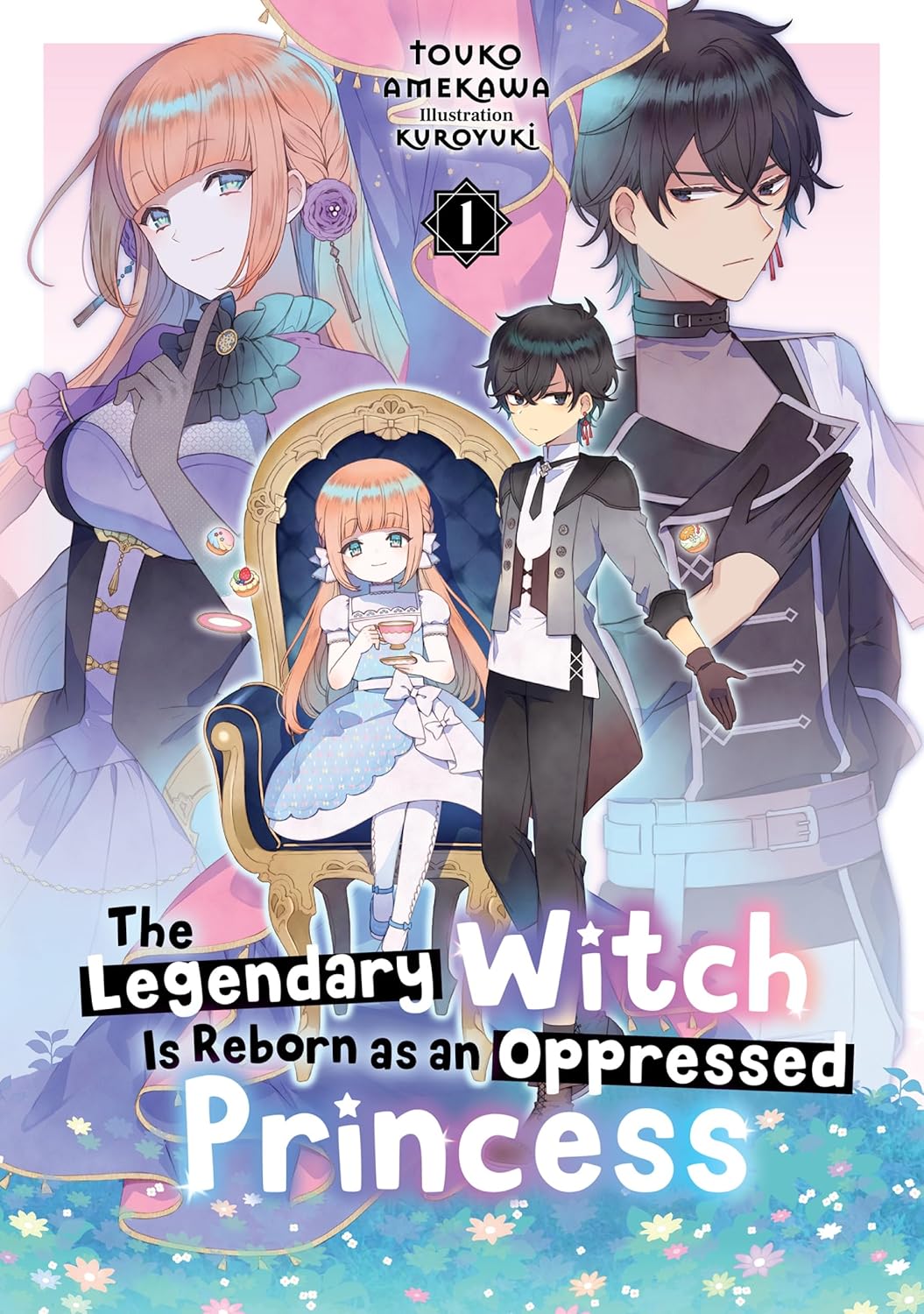By Hisaya Amagishi and Esora Amaichi. Released in Japan as “Fukushokushi Lucia wa Akiramenai: Kyō kara Hajimeru Kōfuku Keikaku” by MF Books. Released in North America by J-Novel Heart. Translated by A.M. Cola.
Dahlia, the protagonist of the main series, and Lucia, the protagonist of this spinoff, are on the face of it not all that alike. Aside from their tendency to deflect all achievements away from them, that is. Dahlia is reserved, while Lucia tends more towards the firey. But it is interesting how both the main series and its spinoff are pushing their respective protagonists into very similar situations. Dahlia keeps coming up with wonderful, insane inventions that will change their entire nation, and as a result is rapidly heading towards a future where she’d better be married and protected, or else she absolutely will be kidnapped. Lucia’s clothing designs are not as revolutionary (though the opera house in this volume may disagree), but her leadership skills and ability to inspire are absolute gold, and she too had better get married soon – she’s already starting to suffer kidnapping attempts.
The first chunk of this book follows the earlier Dahlia plotlines, as we see the debut of the cloth that basically has its own built-in air conditioner. Lucia and her staff have to work out where to best place the cloth, how to deal with those who are ticklish, etc. Lucia is also busy learning about nobility, and what not to say when a noble says something that seems innocent but isn’t. The latter half ot eh book is more along the lines of the latter half of the first, with Lucia running into various people and helping them with fashion/outfits, as well as sometimes being a big ol’ ball of sunshine. We also meet Forto’s attendant Lotta, who is an attendant who is also a blighted (sound familiar), but none of that matters to Lucia, who is great at getting people to come out of their shells. No wonder the “who will Lucia end up with?” sweepstakes are a lot more open than Dahlia’s.
Last time we saw a lot of teasing of a potential relationship with Forto, which is pretty bittersweet given that we’ve read later volumes of Dahlia and see her rejecting him. We’re starting to see a few other alternatives here. Such as Dante, her right-hand man, who is also dealing with trying to put off marriage proposals so he can concentrate on his work, and who is straight up told “do not let her get away” by his grandmother. Or Lotto, Forto’s attendant, who is pretty much given a plotline in this book that’s the equivalent of the sun coming out behind Lucia’s head while heavenly choirs play in the background. Speaking of attendants, Lucia’s found her Mr. Sunset, though he’s deflected it so that she’s not aware. That said, the main thing blocking any of these is Lucia herself, who (in a book that once again tries to be very progressive about gender and sexuality) seems to be demisexual, and has not found anyone she’s that emotionally close to yet.
The main Dahlia series is stalled over here while it finds a new translator, the previous one having stepped down, but we’re getting a third Lucia book soon. Will it catch up with the main series? Can we somehow get Lucia connected to a noble without her managing to avoid it? And will the clothing still be gorgeous? Signs point to yes on that last one.



